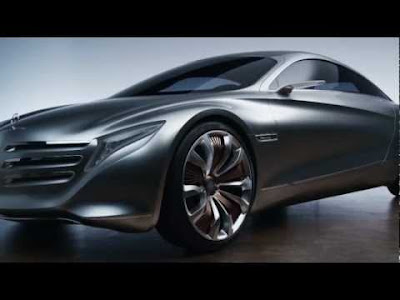
Stagnation in Aerodynamics
The automotive industry has run into an invisible wall in aerodynamics. In the last few years, most cars have aerodynamic coefficients of around 0.3. This is a good value, however, it is hardly pushing the boundaries of what is possible.
In 1989 the Opel Calibra was launched with a drag coefficient of 0.26.
Yes, the Calibra had some advantages in terms of the basic shape, it was a long, low coupe. But this is 2009, 20 years have passed since then. Yet, we have only a handful of cars that come anywhere near this value. One is the Toyota Prius with a Cd of 0.26 and the other is the Mercedes C Class Blue Efficiency with a Cd of 0.25. Meanwhile the 2009 Prius has been revealed and is claimed to have a Cd of 0.25.

So we are finally again at the point where we were 20 years ago. I find that very disappointing. I understand that there need to be some compromises for design, practicality and everyday usability, but I believe we can do better than this.
Lets take the VW Polo Blue Motion, for example.
This is basically the same car as the Polo 1.4 TDI, but it has some tweaks in gearing, aerodynamics and rolling resistance. They have fitted a grille with less ventilation holes in it and a roof spoiler to reduce the wake resistance of the car and a different front bumper. This, combined with narrower tires, takes the Cd down from 0.32 to 0.3. Now if it is this easy, why not produce every Polo like this? Instead of putting on the normal grille, put on this aerodynamic grille. How much does that cost you?
Meanwhile the Audi A2, which came out in 1999, had a Cd of 0.28 (the standard version).

Ten years down the line, the VW Polo comes in with 0.32. The 3L TDI version of the Audi A2 even had a Cd of 0.25, and the Blue Motion version of the VW Polo is 0.3, but 10 years later. Note that the Audi A2 had no such advantages like the Calibra in terms of basic shape. It is a small hatchback like the Polo. Are we making any progress here? I believe that we can get down to the range of ~0.2 in the near future. I think we could have been there already. What is holding us back is the priority of the styling and practicality over the aerodynamics of the cahttp://www.blogger.com/img/blank.gifr. The basic shape of the car is not penned by people who have a clear understanding of aerodynamics.
The Audi TT was an example of a car designed with no regard for aerodynamics. The sloping rear window design produced a lot of rear axle lift at high speed. There were high speed accidents and several people died. Then Audi acknowledged their mistake and fitted the TT with an ugly rear spoiler, some suspension changes and electronic stability control. Somebody should have said during the design stage, "That back window is the ideal angle of a wing, that is not gonna work on a car!"


Sometimes, the practicality aspect of it comes into play. When you have a sloping roofline, which is good for aerodynamics, that decreases the available rear headroom. Yet, in many cars, this compromise is perfectly acceptable for styling reasons.
Someday, somebody has to be bold and design a car with a Cd of 0.2. Of course, it has to have nice styling, and exceptional fuel economy. That is how you will get people to buy such a car.
Why is all this important? Because at highway speeds, wind resistance is the main force you need to overcome and it is directly proportional to the drag coefficient Cd. Changes in the drag coefficient translate almost directly to fuel consumption at highway speeds. In this climate of energy saving, instead of discussing how to power a car, should we not first reduce the amount of power that is required to move it around?
Someday the auto industry will again get moving with regards to aerodynamic innovation. I just hope that day comes sooner rather than later.
No comments:
Post a Comment